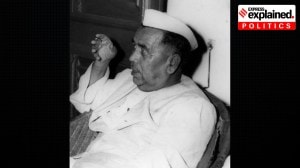Air chiefs MiG claim flies in face of facts
Browne said rookie pilots behind crashes; in 8 of 10 in 3 years,fault was technical.
Air Chief Marshal N A K Browne raised many eyebrows when he said that young pilots were behind the recent MiG crashes in the country. An ageing fleet,the MiGs are often dubbed flying coffins for their crash record. While the Indian Air Force is obsessive about the secrecy of investigation into these crashes,an analysis of the 10 that have gone down over the past three years shows that only in two cases were pilots at the helm rookie flying officers,the others had all got well over 850 flying hours in their log books. Most of the crashes,in fact,were caused by technical defects and engine flame-outs strengthening fears that Indias MiG fleet,the first of whose aircraft was bought back in 1963,may have outlived its service life.
Recent data compiled by the IAF and shared with Air Headquarters too shows that pilot error is not the predominant cause of crashes. Analysing the causes behind 1,000 fighter crashes over the past several decades,the data attributes pilot error to 39 per cent of all crashes,saying technical faults are behind a slightly bigger number (39.5 per cent). Other crashes were attributed to bird hits (9 per cent),human error on ground (1.5 per cent) and faults in production by HAL (0.6 per cent).
December 3,2011: MiG 21 Bison crashes near Sirsa in Haryana.
The pilot,who managed to eject safely,was Wing Commander J D Singh. Holding a Wing Commander rank means the officer has at least 1,200 hours of flying experience.
October 7,2011: MiG crashes near Uttarlai airport,Barmer,Rajasthan
Of the five MiG crashes this year,only in the above case was there a trainee pilot at the controls. Flying Officer Amit Sethi,who ejected safely,was getting his initial fighter flying experience at the time.
September 6,2011: Bison variant again,crashes in Patiala district,Punjab
Flight Lt Arunabh Ghosh was piloting this aircraft and ejected after his engine flamed out. A flight lieutenant has on an average 400 hours of flying experience.
August 2,20011: Older,Type 96 variant of MiG crashes near Naal airbase,Rajasthan.
Another flight lieutenant,M S Pillai,was flying the plane. While he managed to eject,Pillai died of injuries later. He is the only pilot involved in a MiG crash this year to have died.
February 4,2011: A Bison variant crashes during routine sortie near Gwalior,Madhya Pradesh
The first MiG crash of 2011 was attributed to engine failure. Squadron Leader Falguni Laha Roy,with over 850 flying hours under his belt,ejected safety.
June 15,2010: MiG on routine sortie crashes near Rajkot,Punjab
Wing Commander Sandeep Singh was at the controls,and ejected safely after the MiG developed a technical fault. He would have had at least 1,200 flying hours on logbook. Eyewitnesses said Singh ensured the plane didnt come down over a densely populated area.
February 19,2010: MiG crashes soon after take-off from Bagdogra,West Bengal
Squadron Leader Rahul Tiwari ejected safely. Initial reports suggested a technical defect was behind the accident. Like Roy,Tiwari had at least 850 hours flying experience.
September 10,2009: MiG 21 crashes near Bhatinda airbase in Punjab
Flight Lt Manu Akhouri managed to save several lives on the ground by steering his falling aircraft away from populated areas but lost his life. He had more than 400 flying hours under his belt.
June 18,2008: Type 77 aircraft crashes near Chabua air base,Assam
While the pilot was a young flying officer on a training mission,the initial report pointed to an engine failure.
May 27,2009: MiG 21 crashes near Jodhpur
Air Commodore S C Deo was at the controls and managed to eject safely after an engine flame-out. The Air Officer Commanding of the Jodhpur air base and the senior-most pilot at the base with several thousand flying hours to his credit,Deo has been the most experienced pilot in recent times to be involved in a MiG 21 crash.





- 01
- 02
- 03
- 04
- 05


























